How Much Does Tree Stump Removal Cost? (2025 Price Guide)
-
Pete Ortiz
- Last updated:

Taking care of the yard is no small task. It takes dedication, planning, and hard work. With that said, if you do it right, you’ll be able to single-handedly trim the trees, clean the debris, and get everything in order. But what if there’s a tree stump there? What can you do to get rid of it? We have good news! Stump removal services can solve the problem in a couple of hours.
How much will that cost, though? How much do services/contractors charge to remove a stump today? Will there be any additional expenses involved? Maybe you should grind the stump instead of removing it? Read on, and you will find detailed answers to all these questions and more!
The Importance of Removing Tree Stumps
Tree stumps don’t look good in any environment. That is especially true if the rest of the property is nice and neat, but there is a stump sitting right in the middle of the yard attracting pests. And you won’t be able to do much landscape planning until you remove it and make room for a Japanese-style garden, English lawn, or barbeque. More importantly, tree stumps are a safety hazard.
If you have children in the house and they like to run around and play in the yard, stumps have to go—ASAP. Besides, with no stumps to block passage, you’ll get faster and easier access to various parts of the property, which is also a big pro. Last, it will be much easier to sell the house when there’s no “extra work” involved for the potential new owners.
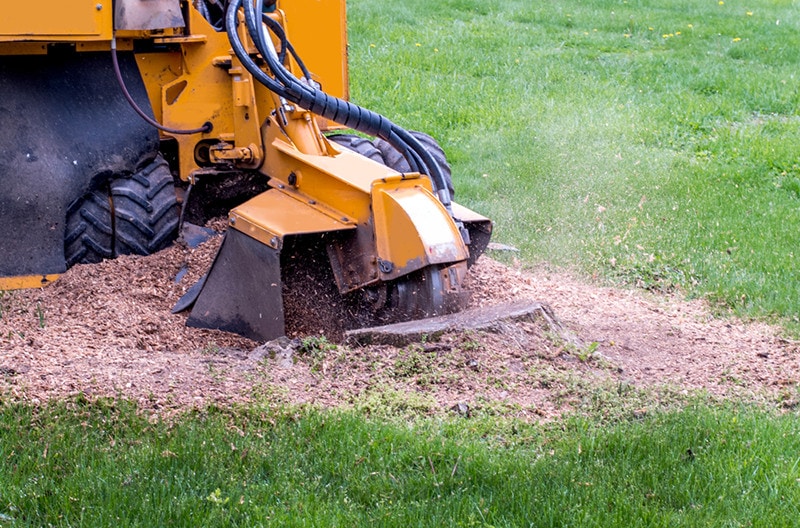
How Much Does Tree Stump Removal Cost?
Individual contractors and services charge $200–600 for the job, while most homeowners end up paying $350–400. For that price, you should expect them to remove a 20–24-inch diameter tree stump and some of the roots that are on the surface. But you can get some work done for much less. For example, it’s very well possible to grind a small stump for $50–100.
That won’t include any root removal, of course. As for the high-end cost, it ranges from $900 to $1.2K. Folks pay this much for professional removal of a larger-than-average stump with a widespread root system that goes 10–15 feet deep into the ground. Other factors that affect the price are the area (city/state), removal method, and extras.
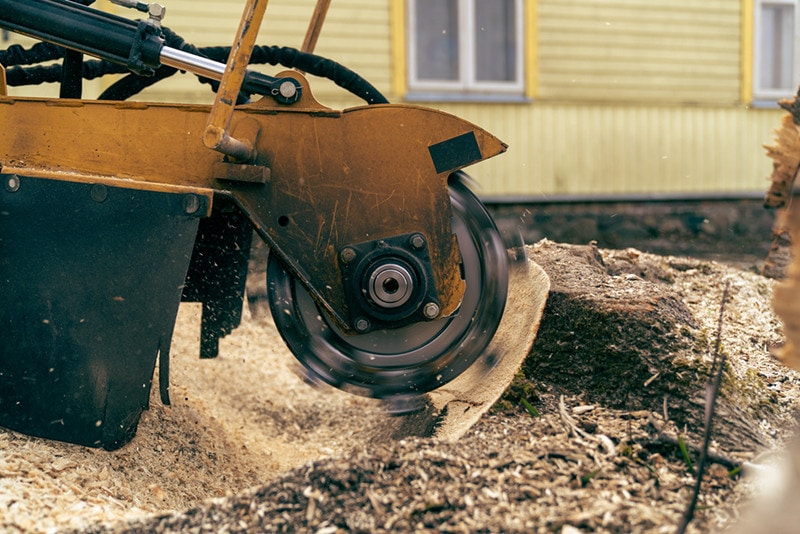
| The average cost in the US: | $200–600 |
| How much most homeowners pay: | $350–400 |
| The low-end removal price: | $50–100 |
| The high-end removal price: | $900–1,200 |
| Cost per diameter inch: | $2–5 |
Stump Removal Cost by Different Regions
The US is one of the largest countries in the world. So, it shouldn’t come as a surprise that the price of various services differs depending on the region. Now, the difference isn’t going to be dramatic, yet it will cost you less to have a stump removed in the Midwest compared to the East Coast:
| The East Coast: | $180–600 |
| Midwest US: | $150–550 |
| The West Coast: | $170–570 |
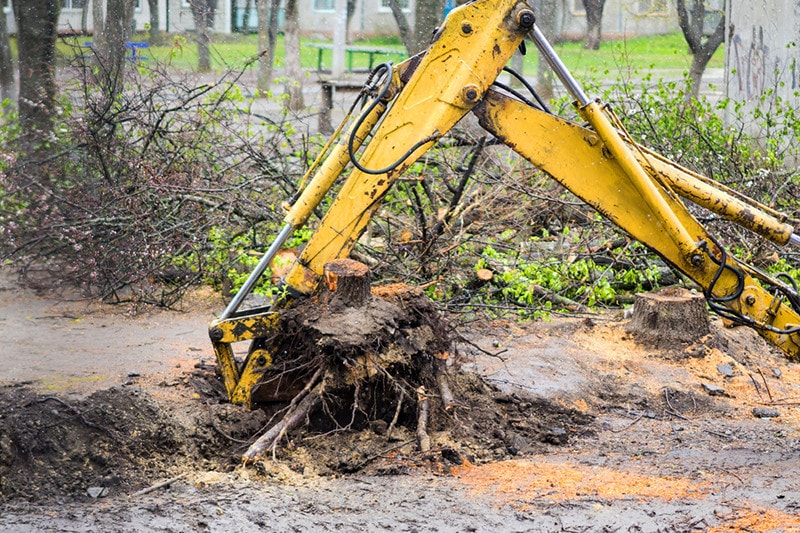
Stump Removal Cost by Method
When you get in contact with a stump removal service provider, they’ll ask you to choose between three different methods. The most common and effective one is the “natural” method that involves using tools (a saw and a pry) and heavy machinery (an excavator, for example) to physically dig out, cut to pieces, and remove the stump. Or, if you’re on a tight budget, you can ask them to burn or kill the tree using chemicals:
- Chemical removal (cheap, effective for small stumps, yet a bit risky; no digging required): $70–190
- Burning the stump (affordable, great against stubborn trees; only allowed in rural areas): $120–250
- Natural removal (the best and most costly option, with zero harm to the environment): $150–550
Stump Removal Cost by Size
While the region and the removal method do matter, it’s the size of the stump that has the biggest impact on the price. The smaller the tree, the less work (and cheaper equipment) is required to remove it, while large-diameter stumps take more effort to get rid of. A quick note: some contractors charge a minimum of $100–150 and won’t work for $50–100. Thankfully, that’s not the case with most professionals.
| 6 inches: | $25–55 |
| 8 inches: | $35–70 |
| 12 inches: | $40–100 |
| 24 inches: | $60–150 |
| 36 inches: | $80–200 |
| 48 inches: | $110–350 |
| 72 inches: | $160–400 |
How Much Do Contractors Charge For This?
Depending on the service provider, they’ll either charge you a flat rate or per hour. On average, the cost of removing one tree stump at a flat rate is going to be $100–400. As for the hourly rates, they range from $80 to $150. Most experts can get this done in 3–4 hours. So, which factors affect the price? The size and the root structure/strength are the key factors. Next, the price will differ depending on the tree type.
Trees with above-average hardiness are challenging to remove. We’re talking about oak, hickory, maple, and other hard species. The condition of the soil also matters, along with accessibility (how easy it is to get to the stump). Also, if you’ve got utility lines running below the stump (or roots growing under the house/shed), that will bump up the price. Finally, older/rotten stumps cost less to remove, as they won’t “put up a fight”.
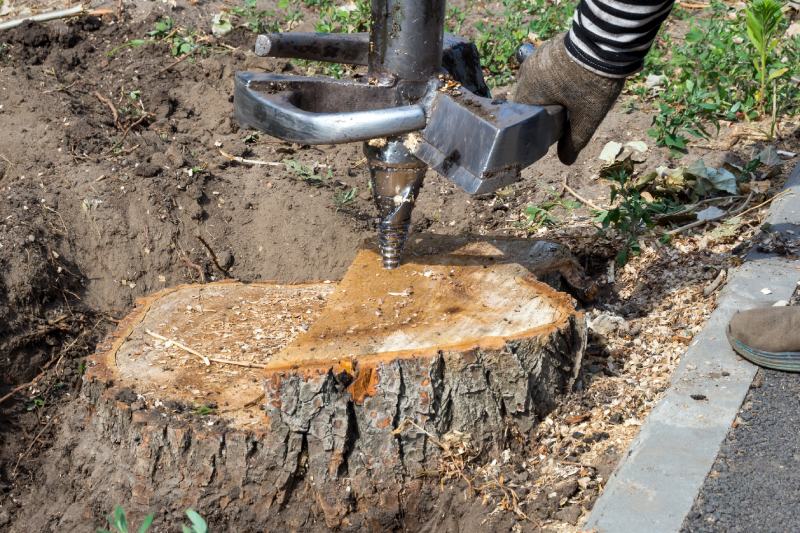
Additional Costs to Anticipate
If you have a bit more bucks to spare, there are some additional services that you can pay for. We’re talking about tree removal (before the stump is dealt with), stump disposal, and sodding, to name a few. Here’s a closer look at additional expenses to expect:
| Tree removal: | $350–1.2K |
| Tree root removal: | $80–500 |
| Tree stump disposal: | $30–60 |
| Bush stump removal: | $50–150 |
| Yard clean-up: | $150–550 |
| Sodding (for the hole): | $0.9–1.8 per sq. ft. |
Maybe You Should Grind the Stumps Instead?
When it comes to a tree stump, you have two options: remove it or grind it. We just covered the removal part. So, what is grinding all about? Does it cost more or less? Grinding is definitely cheaper—almost twice as much, and will set you back $140–300, or even less. Does that mean you should always go for it? Well, it all depends on the task at hand.
Here’s how grinding works: instead of removing the stump from the ground, professionals use special equipment to turn the stump into mulch. This takes less time and effort, hence the more affordable price. On top of that, you won’t be left with a large hole in the yard and disturbed soil, while the mulch can be used for composting. On the downside, most of the roots will remain intact.
- Takes less time to do
- More affordable than removal
- No large holes left after grinding
- Mulch can be used as compost
- Doesn’t deal with the stump thoroughly
- Root decay, which might affect the yard
- Not as safe as stump removal
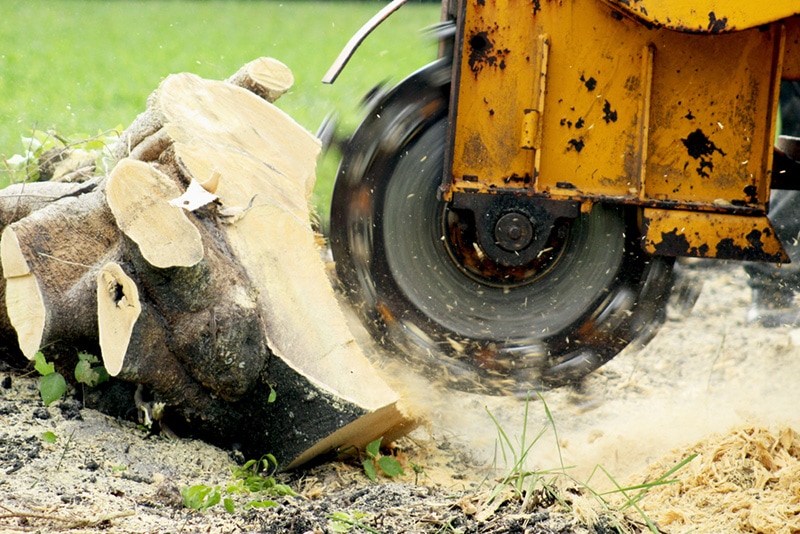
Does Home Insurance Cover Tree Stump Removal?
The vast majority of insurance providers don’t cover fallen trees unless a storm, fire, lightning, explosion, or a vehicle/aircraft caused it. Hail and ice are also covered, but only if the tree fell on your home or another covered structure, like a shed. If it fell on the lawn, don’t expect the company to pay for the damages or the removal. A withered or rotten tree won’t be covered, either. The same is true for trees taken over by pests.
What about the stump, though—will standard insurance cover the expenses? In most cases, no, tree stumps are not covered by insurance, as they don’t pose a threat to your property. However, if the stump was there for many years, but then it got blown over (exposing the root ball) and damaged the fence or part of the home, to repair it, the insurance provider will have to grind that stump. For free!
Can You Do This Manually?
Yes, it is very much doable, but only if you have the right equipment for the job and know your way around stumps. Now, while renting a saw or a pry won’t cost much (you may even ask a neighbor to lend it), renting an excavator can be pretty expensive. Moreover, if you don’t know how to operate it, you’ll end up making a mess of things. That’s why chemicals might be the better option.
Instead of paying pros to do it, you can use them manually. This will only work if the tree is relatively small, though. Bigger stumps with deep roots won’t be that easy to get rid of. As for burning, it’s not allowed in urban areas (due to pollution and fire concerns) and you will have to follow safety precautions. So, check with local authorities to make sure you’re not violating any regulations.

Conclusion
If you just moved to a house in the countryside, chances are, there’s more than one stump waiting for you there. Or maybe there’s been a storm/hurricane that left stumps and fallen trees behind. In any case, to remove them safely and thoroughly, it would be best to hire a team of professionals. They’ll have the necessary equipment and machinery for that.
The bad news is—this service isn’t particularly cheap. On the bright side, once they remove that stump, it will be gone for good. Besides, if you pay them to “handle” more than one tree, that will grant you a discount. So, think everything through, use this post as a price guide, and kiss those stumps goodbye!
- Stump Removal vs. Stump Grinding: the Pros and Cons
- What Are the Rules About Burning Tree Stumps?
- TinyTimbers – Common Domestic Species Janka Ratings
- DallasNews – How to remove a tree stump the organic way
- Does Home Insurance Cover Tree Removal After a Storm?
- Misconceptions About Property-Insurance Coverage for Trees
- Forbes – Insurance For Storms And Fallen Trees
- FIXr – How Much Does It Cost to Remove a Tree Stump?
- How Much Does Tree Stump Removal Cost?
- How Much Does It Cost To Remove A Tree Stump?
Featured Image Credit: Ninadoiron, Pixabay
Contents


